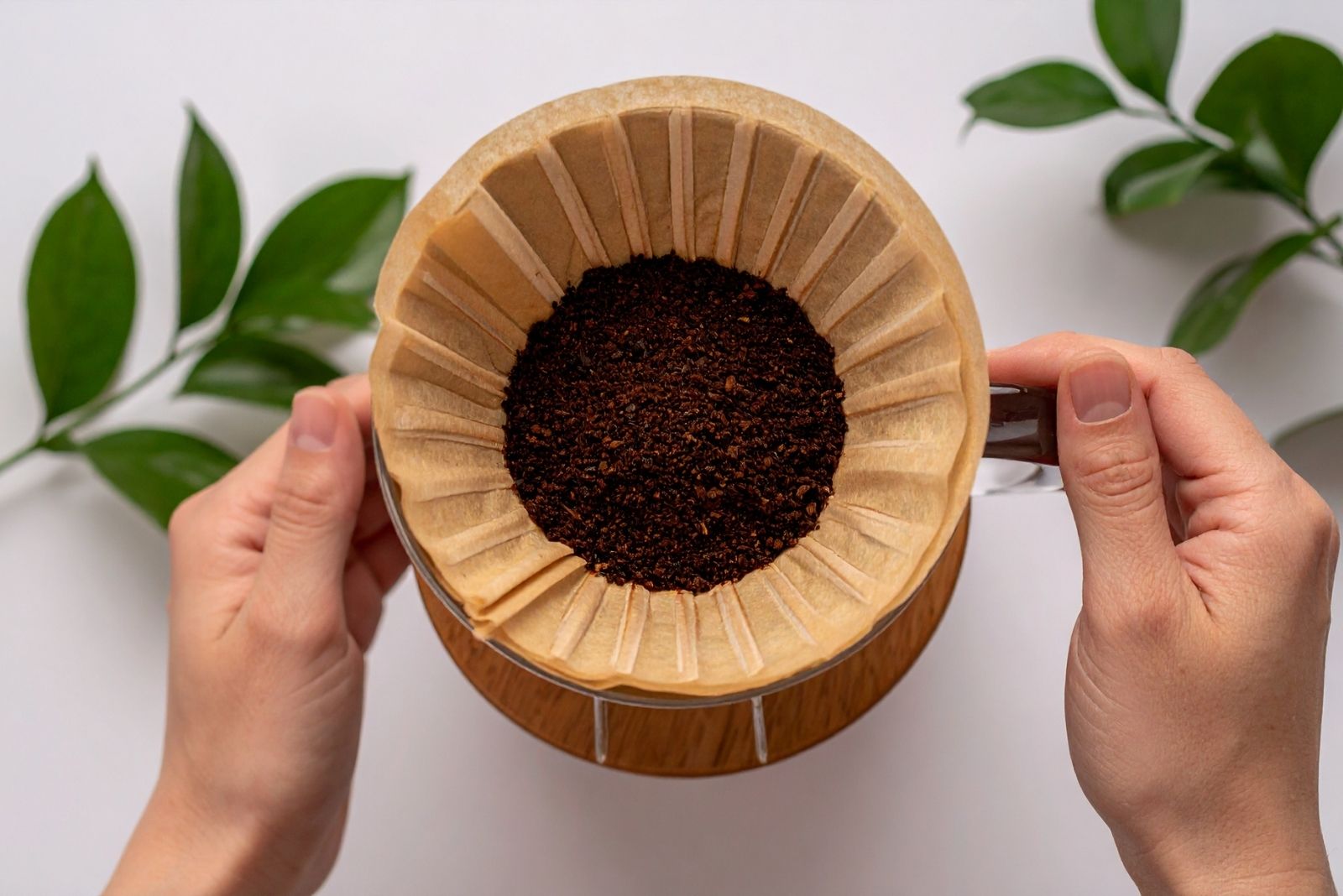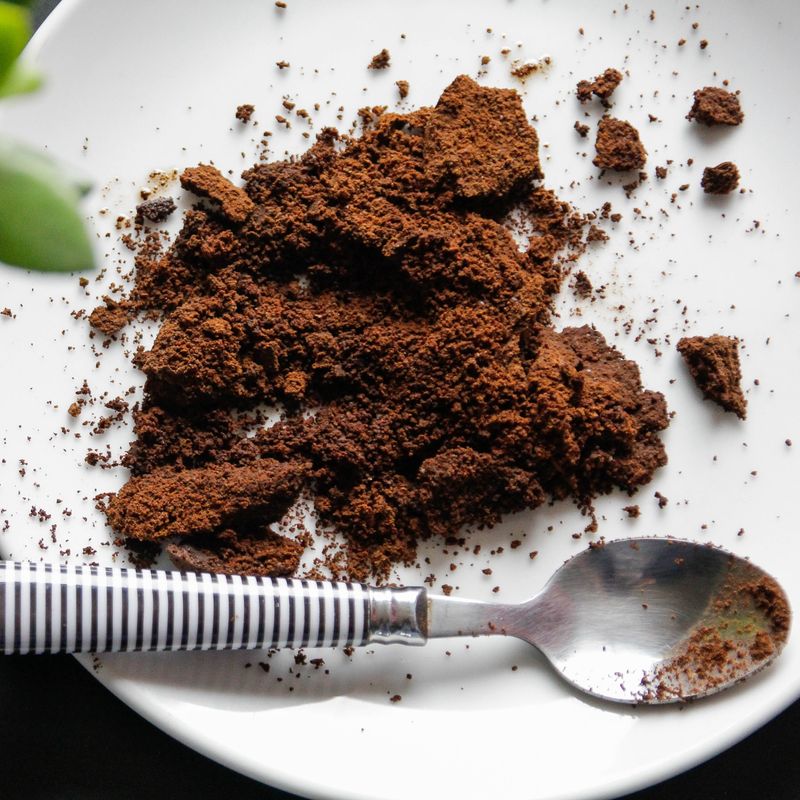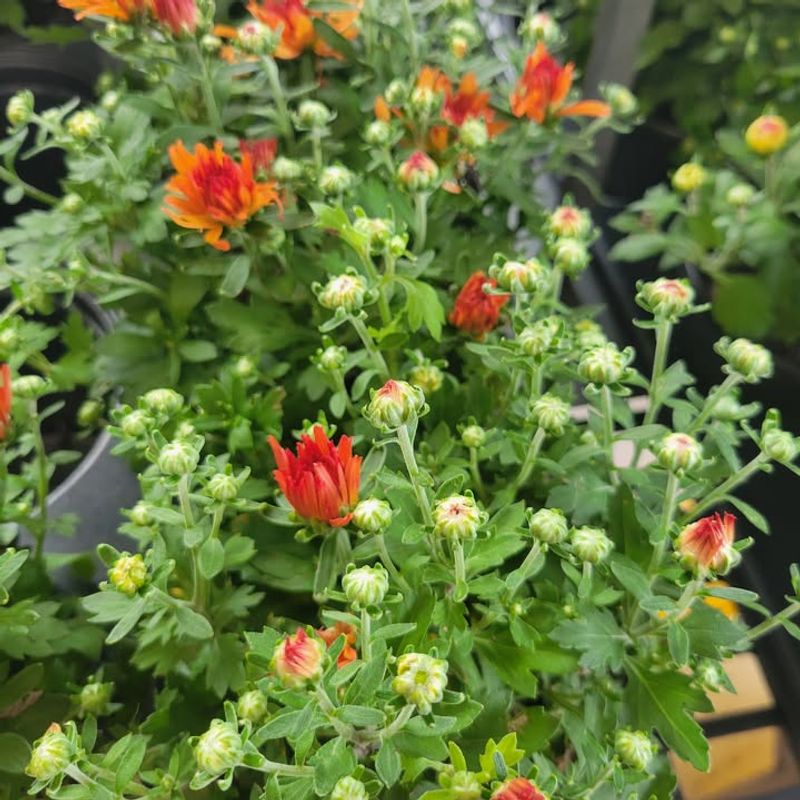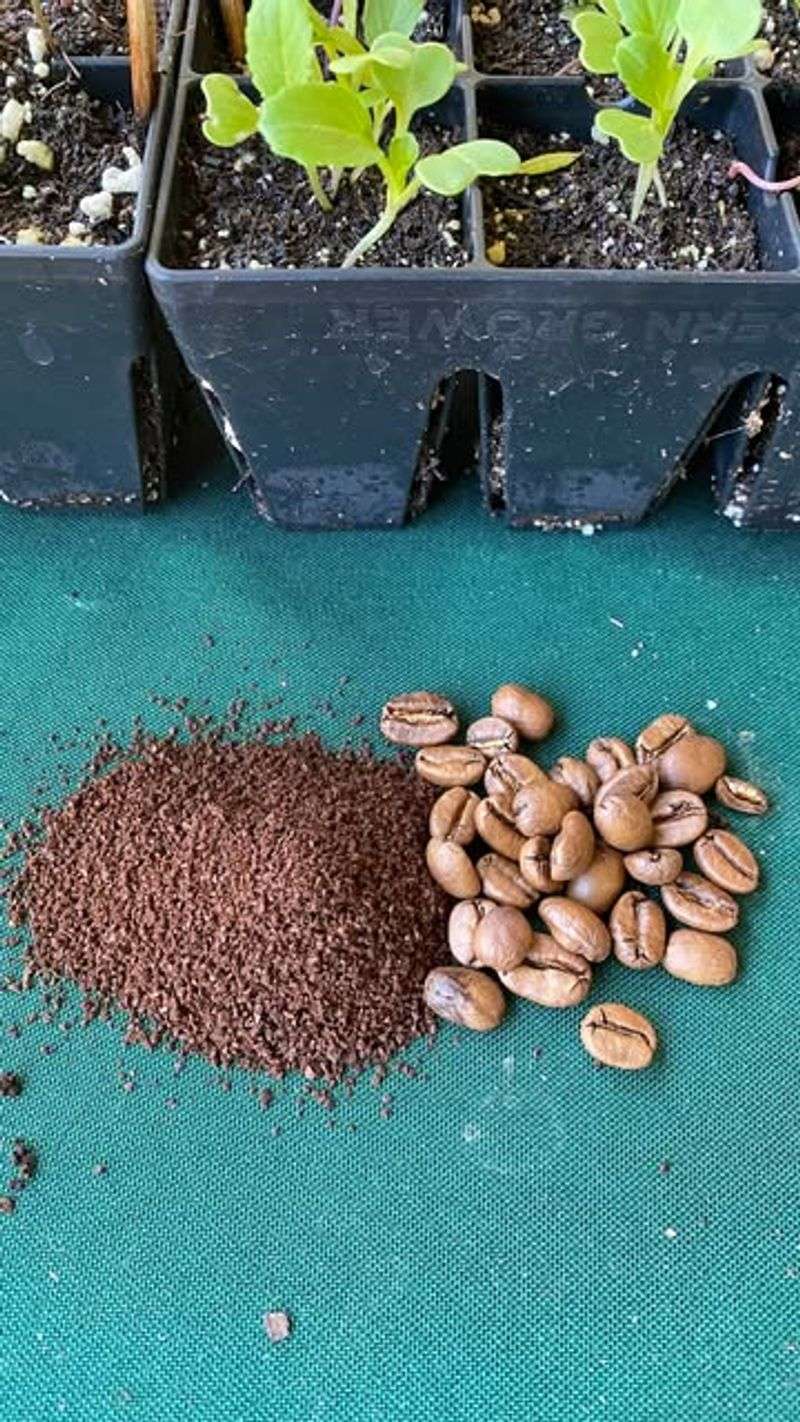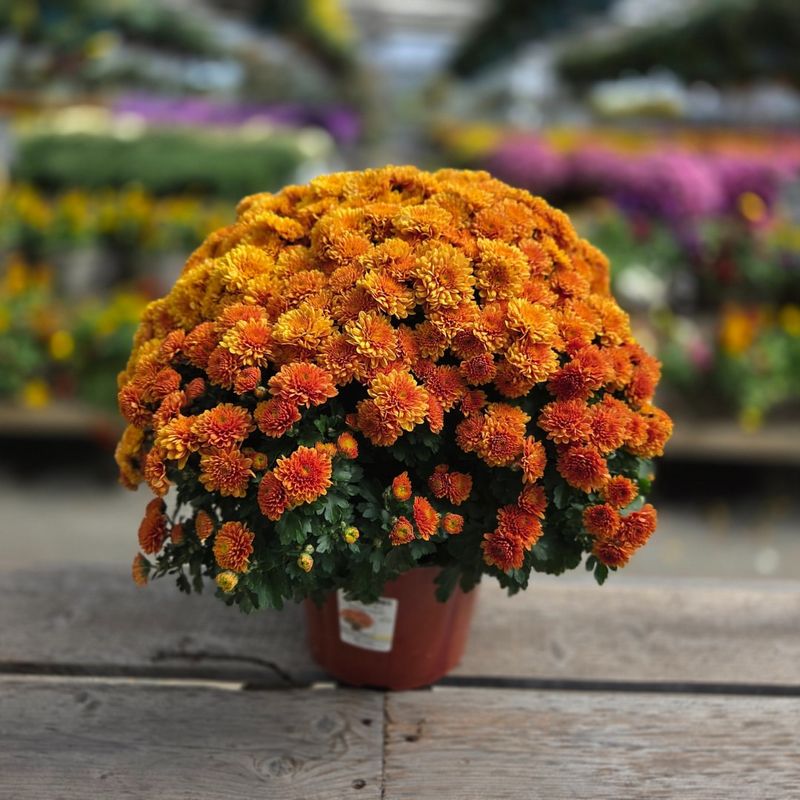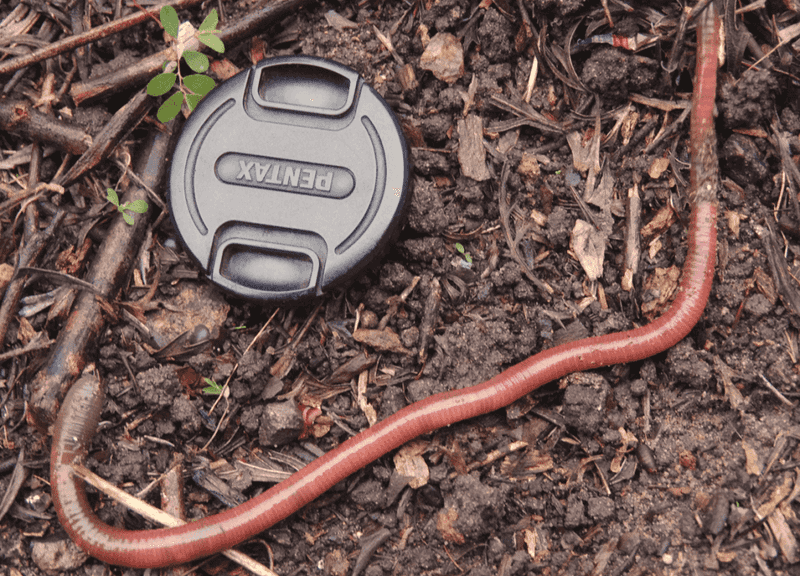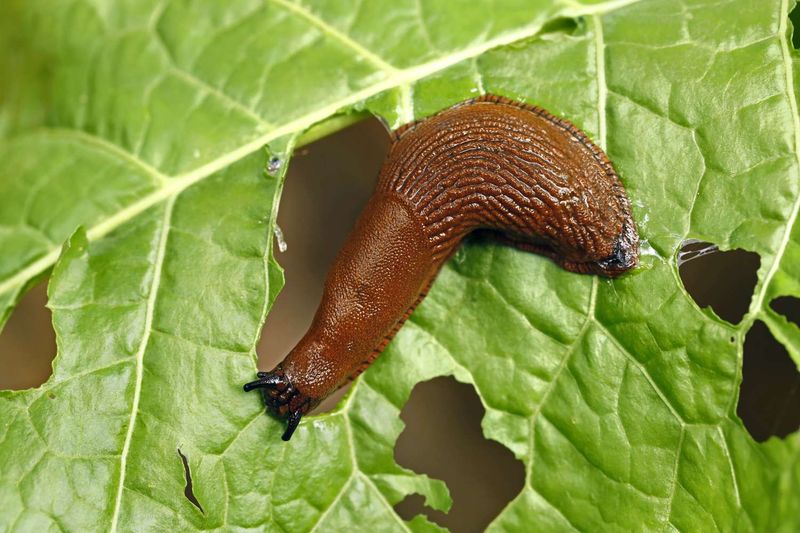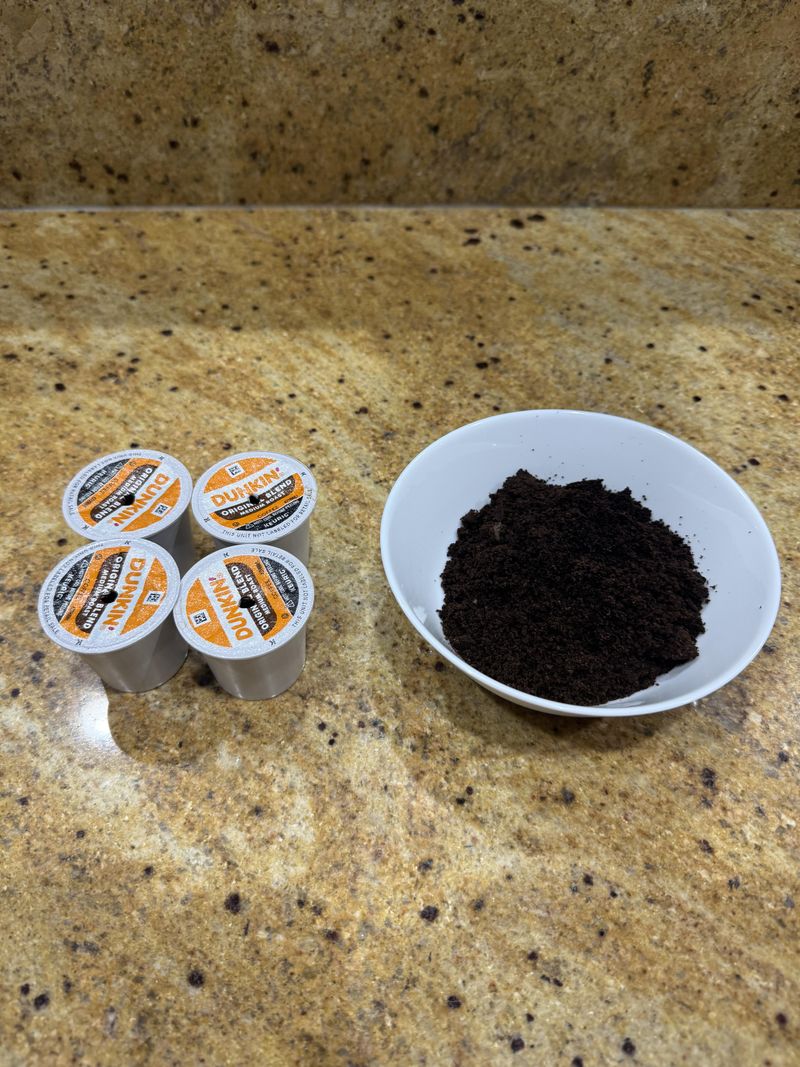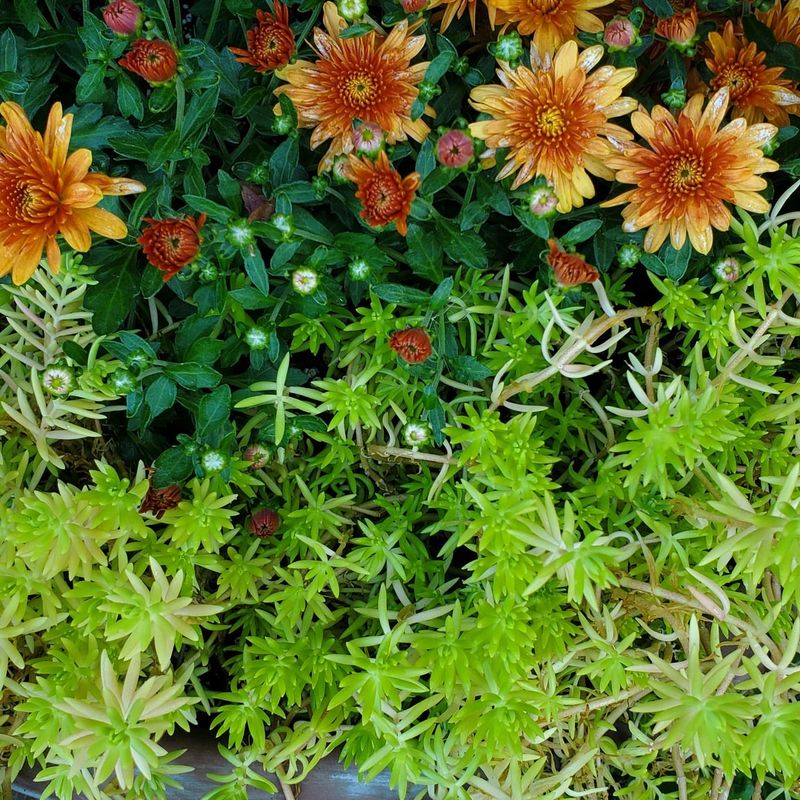Ohio gardeners love their fall mums, and many are discovering that coffee grounds can make a real difference in how these plants perform. Used coffee grounds offer nutrients and other benefits that can help your mums thrive through our unpredictable autumn weather.
Here are eight specific things that happen when you add coffee grounds to your Ohio mums.
1. Soil Texture Gets Looser And Easier To Work With
Coffee grounds break up heavy clay soil, which is common across much of Ohio. The grounds create tiny air pockets that roots can push through more easily. This looser texture helps water drain better while still holding moisture where roots need it.
In my Columbus garden, I noticed my mums developed stronger root systems after I mixed coffee grounds into the planting bed. The soil felt less compacted when I worked it the following spring. Clay-heavy yards especially benefit from this natural amendment.
Apply a thin layer around the base of each plant, then gently work it into the top inch of soil. Avoid piling grounds directly against stems to prevent rot.
2. Organic Matter Builds Up Over Time
As coffee grounds decompose, they add valuable organic material to your garden beds. This process enriches the soil and creates a healthier environment for beneficial microorganisms. Over several seasons, this buildup improves overall soil quality significantly.
I started adding grounds to my mum beds three years ago, and the difference is noticeable. The soil now has a darker color and crumbles nicely in my hands. My neighbors in Cleveland Heights have reported similar results with their fall plantings.
Consistency matters more than quantity here. Regular small applications throughout the growing season work better than dumping large amounts all at once.
3. Nitrogen Levels Increase Gradually
Coffee grounds contain about two percent nitrogen, which supports leafy growth in mums. This nutrient becomes available slowly as the grounds break down, providing a gentle feeding over weeks. Your plants get a steady supply rather than a sudden burst that might cause problems.
Last fall, I noticed my mums maintained their deep green foliage longer than usual after I started using coffee grounds. The plants looked healthy well into October, even as temperatures dropped. This gradual nutrient release suits Ohio’s changing fall conditions perfectly.
Balance is important, though. Too much nitrogen late in the season can delay blooming, so apply grounds mainly in early to mid-summer.
4. Moisture Retention Improves Noticeably
Grounds act like tiny sponges, holding water in the root zone longer between waterings. This helps during dry spells that often hit Ohio in late summer and early fall. Your mums stay hydrated without constant attention, which is especially helpful if you travel or have a busy schedule.
During last September’s dry week, my coffee-ground-treated mums needed watering only twice while untreated ones wilted daily. The difference was clear and saved me time. Friends in Cincinnati reported similar water-saving results with their container mums.
Mix grounds into soil rather than leaving them on top for best moisture-holding results. A quarter-inch layer worked into the root zone works well.
5. Earthworms Show Up In Greater Numbers
Worms find coffee grounds irresistible and will migrate to areas where you’ve applied them. These beneficial creatures tunnel through soil, creating channels that improve drainage and aeration. Their castings also add nutrients that mums can use right away.
Within two weeks of adding grounds to my mum bed, I counted three times as many worms as before. Each time I water or weed, I spot them working through the soil. My aunt in Dayton had the same experience with her fall garden beds.
Worms do the hard work of mixing grounds deeper into soil, so you don’t have to dig as much. This natural process benefits your entire garden ecosystem.
6. Certain Pests Stay Away From Treated Plants
Slugs and some insects dislike the texture and smell of coffee grounds, often avoiding plants surrounded by them. This natural deterrent works without harsh chemicals, making it safe for pollinators and beneficial insects. The effect isn’t foolproof, but it provides an extra layer of protection.
My mums had fewer slug trails after I started using grounds as a barrier around each plant. I still found a few pests, but damage decreased noticeably. Gardeners in Toledo have mentioned similar success with their autumn plantings, especially in damp areas.
Refresh the grounds after heavy rain since they wash away or decompose quickly. A fresh application every two weeks during peak growing season maintains the deterrent effect.
7. Soil PH Drops Slightly Toward Acidic
Coffee grounds are mildly acidic and can lower soil pH gradually over time. Most mums prefer neutral to slightly acidic conditions, so this change usually helps rather than hurts. However, Ohio soils vary widely, so knowing your starting pH helps you avoid overdoing it.
I tested my soil last spring and found it had shifted from 7.2 to 6.8 after a season of coffee ground applications. My mums seemed to appreciate the change, showing better color and growth. Friends with already-acidic soil in eastern Ohio use grounds more sparingly to avoid problems.
Test your soil every year if you regularly add coffee grounds. This simple check prevents unwanted pH swings that could stress your plants.
8. Bloom Timing And Quality Can Shift
The nitrogen boost from coffee grounds can affect when your mums bloom and how flowers develop. Too much nitrogen encourages leaf growth at the expense of buds, potentially delaying fall color. Applied correctly, though, grounds support strong stems that hold blooms upright through Ohio’s autumn winds.
I learned this the hard way when my mums bloomed two weeks late after I applied grounds too heavily in August. The next year, I stopped adding them by mid-July, and bloom timing returned to normal. The flowers opened right on schedule in mid-September, just as temperatures cooled.
Timing your applications matters as much as the amount you use. Focus on spring and early summer feeding, then let plants shift to bloom mode naturally.

